Nestled on the southern border of the Texas Hill Country sits the small, rural town of Uvalde. Before the events of May 24, Uvalde was mainly known for its oak trees, honey and as Matthew McConaughey’s hometown.
In late May, it became the epicenter of one of the year’s biggest stories and harrowing tragedies.
All eyes were on the small Texas town after a gunman entered Robb Elementary School, killing two adults, 19 children and critically wounding 17 more. It became the deadliest school shooting in Texas and a tragic catalyst in today’s ongoing discourse on gun violence, reform and mental health.
The aftermath also highlighted South Texas hospitals’ emergency response, coordinated trauma care and the resilience of their staff and the state’s health care workers who came together to mourn, mend and heal a hurt community.
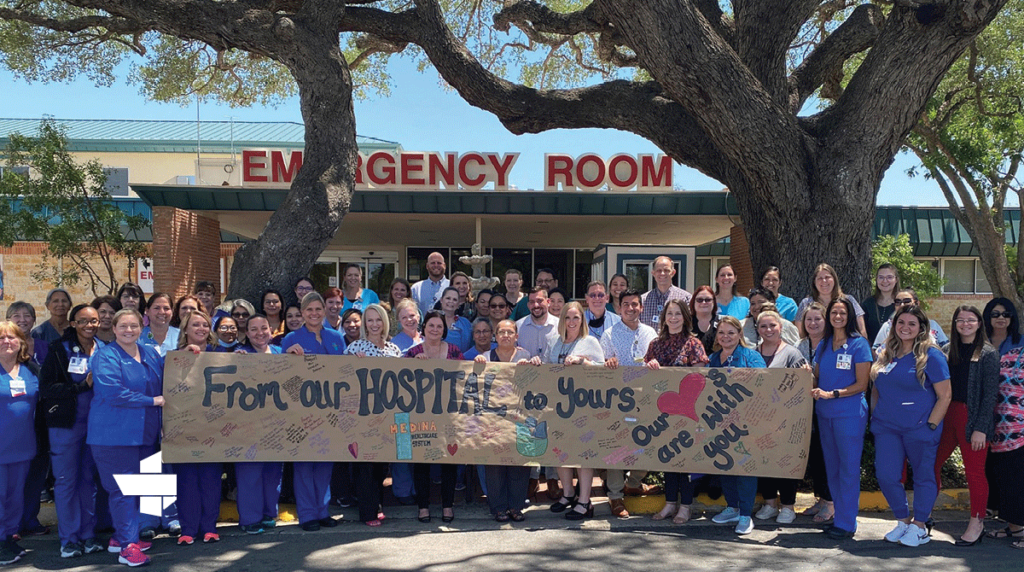
Triaging a Tragedy
In the center of town sits Uvalde Memorial Hospital, a non-profit county hospital that has been a Texas Hospital Association member since 1950. UMH is one of the 159 remaining rural hospitals in Texas and one of 88 classified as a Critical Access Hospital. As such, UMH is a critical point of access to health care for the 27,000 people in Uvalde County.

“For a rural hospital, we are very fortunate to have full-time security staff and an individual who is responsible for emergency and disaster management,” says Tom Nordwick, CEO of UMH. “So, prior to this, we’ve done a lot of tabletop drills where we ran drills and went through the process of standing up our command center during an external disaster, which is what this was.”
“Of course, it’s always more challenging during the real thing.”
Shortly after 1 p.m. on May 24, UMH was the closest health care facility to Robb Elementary and ground zero for critical hospital care. Within 15 minutes, it received 15 patients from Robb Elementary — four adults and 11 children. Two additional patients came to the facility deceased on arrival.
Editor’s Note: At the time of this writing, Tom Nordwick was the CEO of Uvalde Memorial Hospital. The new CEO is Adam Apolinar, RN, BSN, MA.
Parents, law enforcement and the eyes of the country descended upon UMH as staff and health care providers worked through what Nordwick described as “organized chaos.”
By 7:30 p.m., all the shooting victims admitted to UMH were discharged or transferred to another hospital for acute trauma care. Three pediatric patients and one adult patient went to University Health, one adult patient went to Brooke Army Medical Center and one pediatric patient went to Methodist Hospital San Antonio. The high level of coordinated trauma care continued despite the unimaginable circumstances.

“Texas hospitals unite in tragedy. This coordination between regional and local hospitals during a crisis reflects how the state’s trauma system is intended to work,” says John Hawkins, THA president/CEO. “We appreciate Texas’ robust emergency response network and resources that exist at the state and local levels.”
While the small hospital was as prepared as it could be for the operational impact of the shooting, it was not ready for the immediate national spotlight. Media crews across the country flocked to Uvalde within hours of the shooting.
“We were not prepared to deal with the overwhelming amount of media,” Nordwick recalls. “It was a frenzy. There’s no better word for it. I’ve seen situations on television where media goes crazy and camps out on people’s lawns and that’s pretty much what Uvalde became on that day and in the days to come.”
Standing in the Gap
There have been eight mass shootings in Texas over the past 13 years. And while politicians and state lawmakers continue to debate gun reform, Texas hospitals continue applying the lessons learned from previous shootings to save lives.
Five years ago, University Health also cared for victims of the 2018 Sutherland Springs First Baptist Church shooting. When its Level 1 trauma team was paged about the patients from Uvalde, the team had multiple operating rooms ready within the hour.
The initial feeling was one of deep sadness, and a feeling of not wanting to believe that it could happen again in our region. This immediately shifted to a feeling of action that we must do all we can to prepare to take care of multiple patients from a mass shooting, which is what we did.
RONALD STEWART, M.D., CHAIR OF SURGERY AT UNIVERSITY HOSPITAL
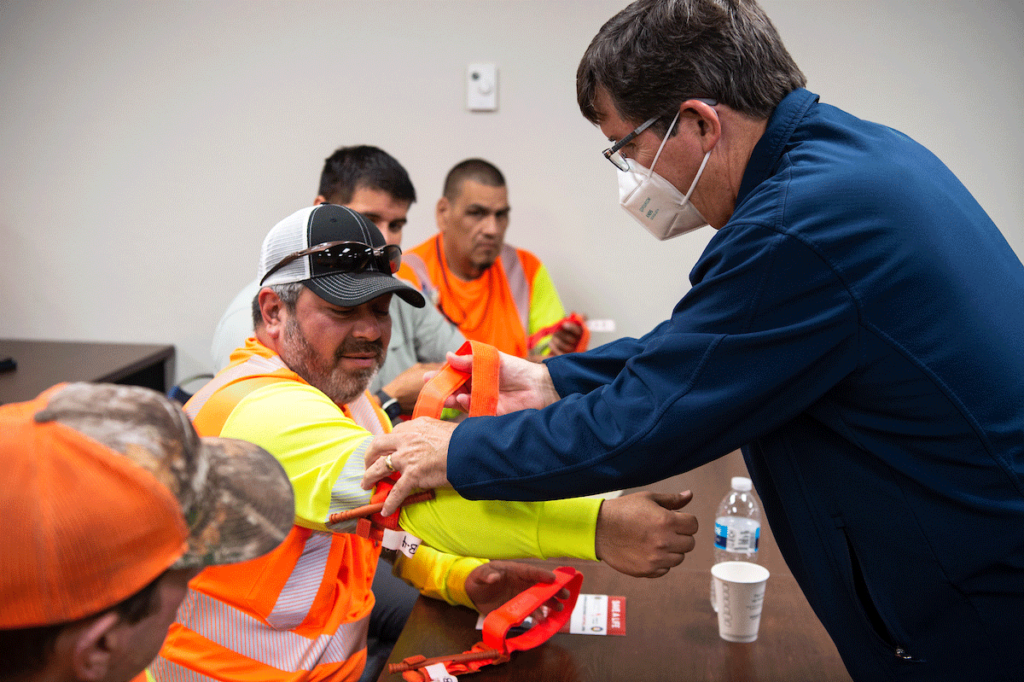
Through the STRAC Whole Blood Program, 25 units of blood were immediately sent to the scene in Uvalde and to UMH, just a little over an hour after it was requested. Additional units of whole blood arrived by ambulance and medical helicopters.

“This could only be done due to the prior planning and regional partnership with hospitals across the nation, and through the coordination by STRAC,” Dr. Stewart says. “This cold stored whole blood program for disaster response is a great example of regional cooperation and communication through our trauma system.”
Level 1 Trauma Centers like University Health and Brooke Army Medical Center (BAMC) — another hospital that later cared for a patient from Uvalde — must provide leadership in trauma prevention and public education to its surrounding communities. In 2017, University Health launched the American College of Surgeons’ Stop the Bleed training in South Texas. The training teaches community members how to prevent deaths from traumatic bleeding by wound packing and tourniquet placement. Since then, they’ve equipped more than 16,600 people in South Texas with life-saving knowledge and techniques.
On May 19, days before the shooting, University Health and BAMC hosted five in-person Stop the Bleed courses that taught 120 people within the community how to save someone from traumatic bleeding.
“I love to help people feel empowered and confident that they could step in and save a life,” says Brandy Martinez, BAMC injury prevention coordinator. “If we can prevent one death, then it is all worth it.”
Caring for Those Who Care
Two years of a global pandemic sharpened the focus on workplace violence, burnout and mental health resources for frontline health care workers. After the shooting, the Texas health care industry rallied around UMH and the community it serves.

“Rural hospitals, first responders and trauma teams deal with whatever happens every day, but they handled a real worst-case scenario on May 24. We applaud their courage, and support them as they mourn and heal together,” says John Henderson, president of the Texas Organization of Rural & Community Hospitals.
In the days following the shooting, people throughout the state waited in lines, sometimes up to two hours, to donate blood. Just two days after the shooting, South Texas Blood & Tissue reported that over 1,500 people donated blood to support Uvalde — the most since Hurricane Harvey struck the Texas coast in 2017. According to a media release from South Texas Blood & Tissue, the response was so great that the blood center expanded capacity at the Donor Pavilion, its single largest donor site. Additional donation beds were set up in the organization’s auditorium to accommodate those who wanted to donate.
Various crowdfunding platforms raised millions of dollars to support the families impacted. One such fund was the University Health Foundation’s Uvalde Victims Relief Fund to cover the unpaid medical expenses incurred by the victims and other needs identified by social workers.
The event moved others in the health care industry who understand the magnitude of what first responders and frontline health care providers witnessed.
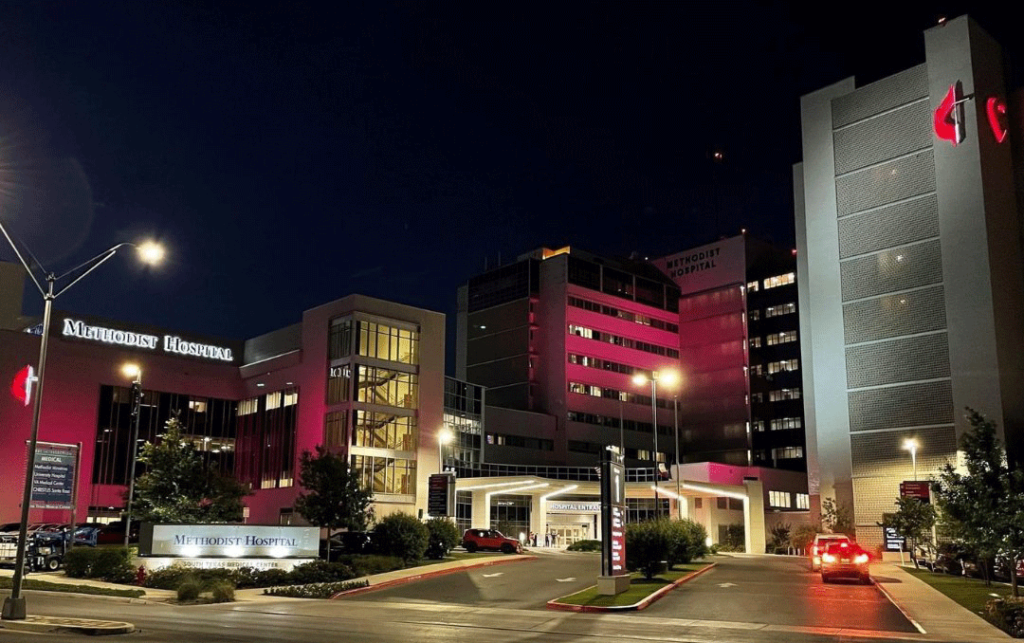
Nearby hospitals and health systems sent staff to UMH to help the staff, patients and community begin to heal. Children’s Hospital San Antonio was one of the San Antonio health systems that sent nurses, children’s psychologists, chaplains, social workers and child life associates to UMH to support patients and community members grappling with the aftermath of the tragedy.
Methodist Hospital San Antonio, one hospital that received patients from Uvalde, illuminated its buildings at night with maroon and white lights, the Robb Elementary school colors. Staff from Medina Regional Hospital, Texas Vista Medical Center, Connally Medical Center and University Medical Center sent signed banners with words of gratitude and encouragement to the UMH staff. Organizations throughout Texas and other parts of the country bought meals for UMH staff. Lutheran Church Charities sent 13 comfort dogs to UMH and other sites around the community to help comfort hospital staff, patients and first responders.
“The staff here are very appreciative of the support,” says Nordwick, UMH CEO. “When you go through something like this, you almost have brain fog for a while afterwards. Especially if you’ve never experienced something like that. It just hits you a little harder.”
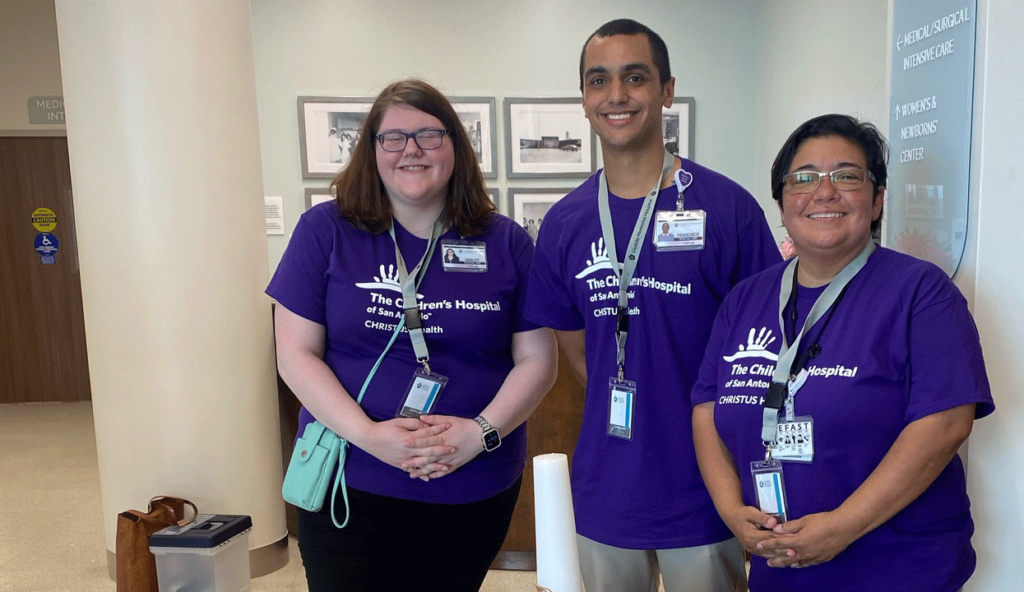
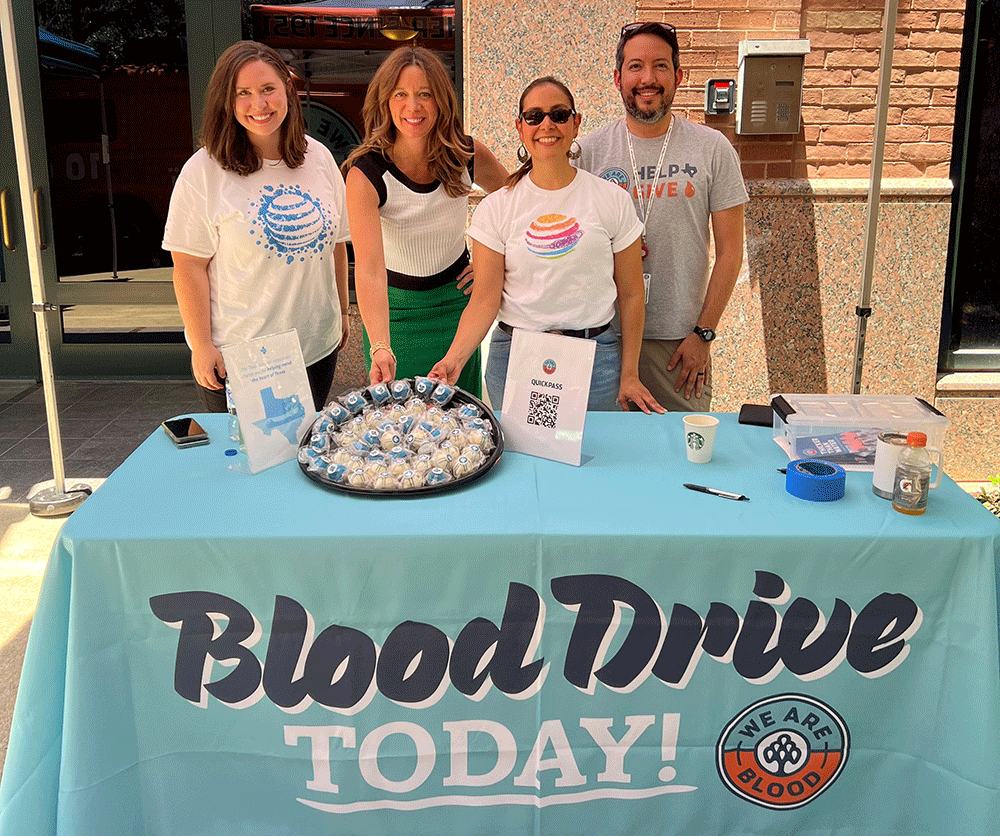
Widening the Safety Net
While the Uvalde community appreciated the initial outpouring of support, the full toll of the shooting remains unknown. Children and adults who were in the school will have to cope with what they heard and saw that day for a long time, as will many members of the tight-knit community.
“There will likely be long-term ramifications from this for years down the road and it is important that mental health resources are available, especially in rural communities,” says Nordwick.
For those living in a community like Uvalde, access to long-term mental health resources is challenging. According to the 2022 State of Mental Health in America report, Texas ranks last in the Access Ranking, which measures the access, cost and quality of insurance and treatment of mental health issues. And, according to findings published in a 2017 Morbidity and Mortality Weekly Report (MMWR) by the CDC, those in rural communities were at an increased risk of depression, anxiety and suicide compared to their urban counterparts.
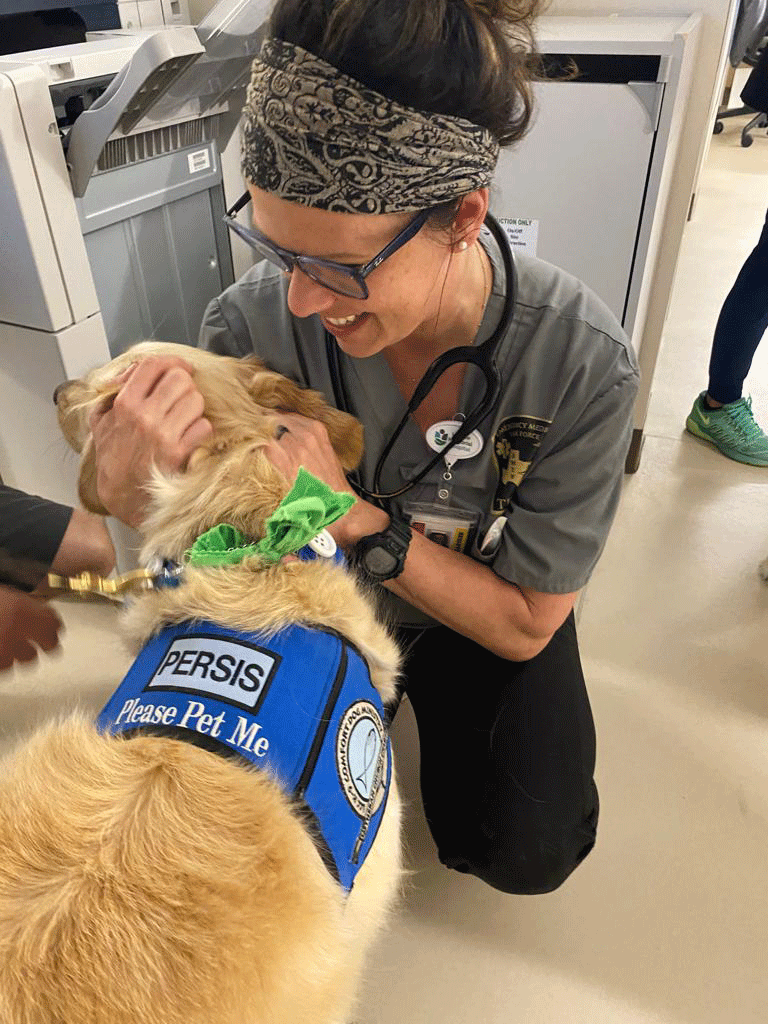
Short-term behavioral health resources that provide centralized counseling services are available for the Uvalde community, with more long-term plans on the horizon. On June 1, the Governor’s Public Safety Office made an initial $5 million investment to establish the Uvalde Together Resiliency Center. It will serve as a hub for services, such as crisis counseling and behavioral health care for survivors, first responders, and those in the community seeking ongoing support.
According to Nordwick, there are also plans to expand behavioral health resources at UMH, which might include adding behavioral health navigators in the emergency room to help guide and follow up with patients who present with mental health concerns.
Moving Forward Together
Uvalde was book ended by two tragic shootings in other states, one at a grocery store in Buffalo, New York, on May 14, and another that hit even closer to home for the health care community.
Eight days after Uvalde, on June 1, a gunman entered Saint Francis Hospital in Tulsa, Okla., killing four people. The shooting claimed the lives of two physicians, a hospital receptionist and a patient’s spouse, reigniting the large-scale conversations about workplace violence, gun reform and access to mental health resources.
Three days later, THA joined the American Hospital Association for its sixth-annual “Hospitals Against Violence” campaign that unites hospitals, health systems, nurses, doctors and other medical professionals on social media to highlight programs and other violence mitigation initiatives.
The sequential shootings in Buffalo, Uvalde and Tulsa galvanized the most significant legislative action toward gun reform in 30 years. Four U.S. senators, John Cornyn (R-Texas), Kyrsten Sinema (D-Ariz.), Chris Murphy (D-Conn.) and Thom Tillis (R-N.C.), worked together to produce bipartisan legislation within weeks after the Uvalde shooting.
On June 25, President Joe Biden signed the Bipartisan Safer Communities Act into law. The new law enhances background checks for gun buyers under the age of 21, restricts access to domestic violence offenders and funds school safety and mental health programs.
“So often around here, people do things and say things not with the intention of actually passing legislation, but with the intention of making a political statement or messaging. That’s not what we did here,” said Sen. Cornyn in a public statement.
“Will it save lives? I believe the answer to that is yes, and that makes this worth doing.”
Those who treat victims of gun violence recognize that, like other ailments, prevention is paramount. And while the topic of gun control remains divisive, leaders in trauma care believe it’s possible to have a common and inclusive narrative regarding firearm injury prevention.
For Dr. Stewart, whose career as a trauma surgeon spans three decades, witnessing the toll that gun violence has on patients and their families motivates him to continue advocating for long-term solutions.
“It’s not the long hours, the late hours or the fatigue of high-intensity work in critical situations that weighs on me. What weighs on me is to witness the horrific violence to our patients. Violence that is preventable, if we come together to understand the root cause of violence, while simultaneously working to make firearm ownership as safe as reasonably possible.”
The Texas Hospital Association and Texas Healthcare Trustees submitted a $10,000 contribution to the Robb School Memorial Fund following the tragic shooting in Uvalde on May 24. If you would like to make a donation to the Robb School Memorial Fund in support of the victims’ families, donations can be made at any branch of First State Bank, by mail or via Zelle. For more information, visit www.fsbuvalde.com.

